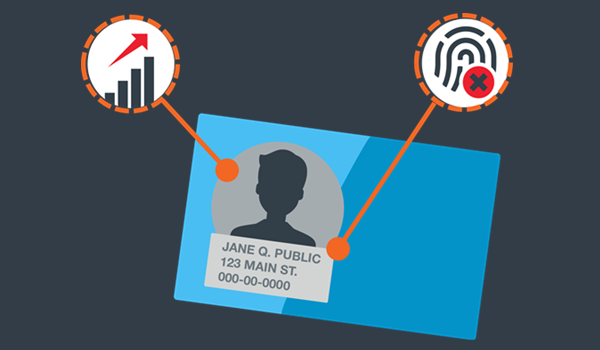Best Practices for Fighting Synthetic Identity Fraud
Synthetic identity fraud is a well-organized activity of fraud rings looking for ways to create and then nurture fake identities over a long period of time. Fraudsters can build a synthetic identity by creating a fake SSN or obtaining/stealing a real Social Security number (SSN) and adding non-matching identifying information such as name, date of birth, and address. Then they introduce the identity into the system by requesting a service or applying for something that does not require stringent identity verification measures. Once there is a record of that identity, they can use that business relationship to build upon the credit profile from there – for instance, a pre-paid phone or a rental agreement. As the falsified identity begins to have “legs” the fraud ring will move on to larger account requests – credit cards, loans, etc.
So How Can Your Business Fight Back?
- You need fast, reliable identity
verification solutions that check applications against
multiple sets of public and proprietary data. Multiple data sources
help to determine if:
- The applicant’s SSN is valid
- The applicant has a record of employment with a real company and files income tax returns
- The applicant’s address is real and no suspicious activities have been associated with it
- The applicant owns a phone, gets cable, uses electricity or heats a home (and gets these related bills)
- You need analytics-based solutions that use data to detect linkages and suspicious patterns to help determine if the applicant is a real person. These analytic capabilities can help organizations experience a reduction in false positive rates – allowing them to flag the application for further screening or give it the green light.
- You need machine learning algorithms that help discover unique behavior patterns. When used with matching logic that helps identify suspicious activity such as authorized user abuse, you’re better prepared to reduce fraud charge-offs and losses.

How Equifax Can Help
FraudIQ® Synthetic ID Alerts are based on patent-pending algorithms that analyze attributes such as authorized user velocity and identity discrepancies to help determine if the identity presented is potentially synthetic. When you submit a batch file or real-time inquiry and suspicious information is found, the synthetic ID alert will be returned, providing you with the information your business needs to assess in order to detect this type of fraud.
Successfully protecting your business against fraud requires a multi-layered approach. FraudIQ Synthetic ID Alerts are part of an integrated suite of identity verification, authentication and fraud detection solutions that leverage Equifax’s proprietary and differentiated data. This data helps you assess modeling behavior, rather than just data checking – which can provide a better output for prevention.
Recommended for you


